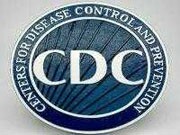
TUESDAY, July 1, 2014 (HealthDay News) — None of the dozens of staffers at the U.S. Centers for Disease Control and Prevention in Atlanta potentially exposed to anthrax last month has gotten sick, agency officials reported Monday.
The CDC said staffers at three of its laboratories had been provided antibiotics “out of an abundance of caution” following a breakdown in safety procedures, the Associated Press reported.
Agency officials said anthrax spores haven’t been detected on surfaces in the labs and it’s not clear that any anthrax was released into the air, the AP said.
Initial reports indicated that one of the CDC’s higher level biosafety labs in Atlanta was preparing the anthrax samples for research in lower level labs. The higher level lab did not adequately inactivate the samples before sending them to the other labs, which aren’t equipped to handle live anthrax samples. Workers at the lower level labs, believing the samples were inactivated, weren’t wearing proper protective equipment while handling them, the agency said.
The potential exposures were discovered June 13, the CDC said.
The CDC said an internal review of the mishap is expected later this week.
According to the National Institutes of Health, anthrax is actually a disease caused by a germ — bacillus anthracis — that lives in soil. Anthrax is rare, though potentially fatal, and typically affects animals, like cattle, sheep, and goats, more often than people. People can get anthrax from contact with infected animals, wood, meat or hides.
It can cause three forms of disease in people:
- Cutaneous, which affects the skin. People with cuts or open sores can get it if they touch the bacteria.
- Inhalation, which affects the lungs. People can get this from breathing in spores of the bacteria.
- Gastrointestinal, which affects the digestive system. People can get it by eating infected meat.
Antibiotics can cure anthrax if it’s diagnosed early. But many people don’t know they have anthrax until it’s too late for treatment. A vaccine to prevent anthrax is available for people in the military and others at high risk, according to the NIH.
Anthrax made headlines in 2001 during bioterror attacks when someone purposely spread anthrax through the U.S. mail system, killing five people and sickening 22.
More information
To learn more about anthrax, visit the National Institute of Allergy and Infectious Diseases.
Copyright © 2025 HealthDay. All rights reserved.

